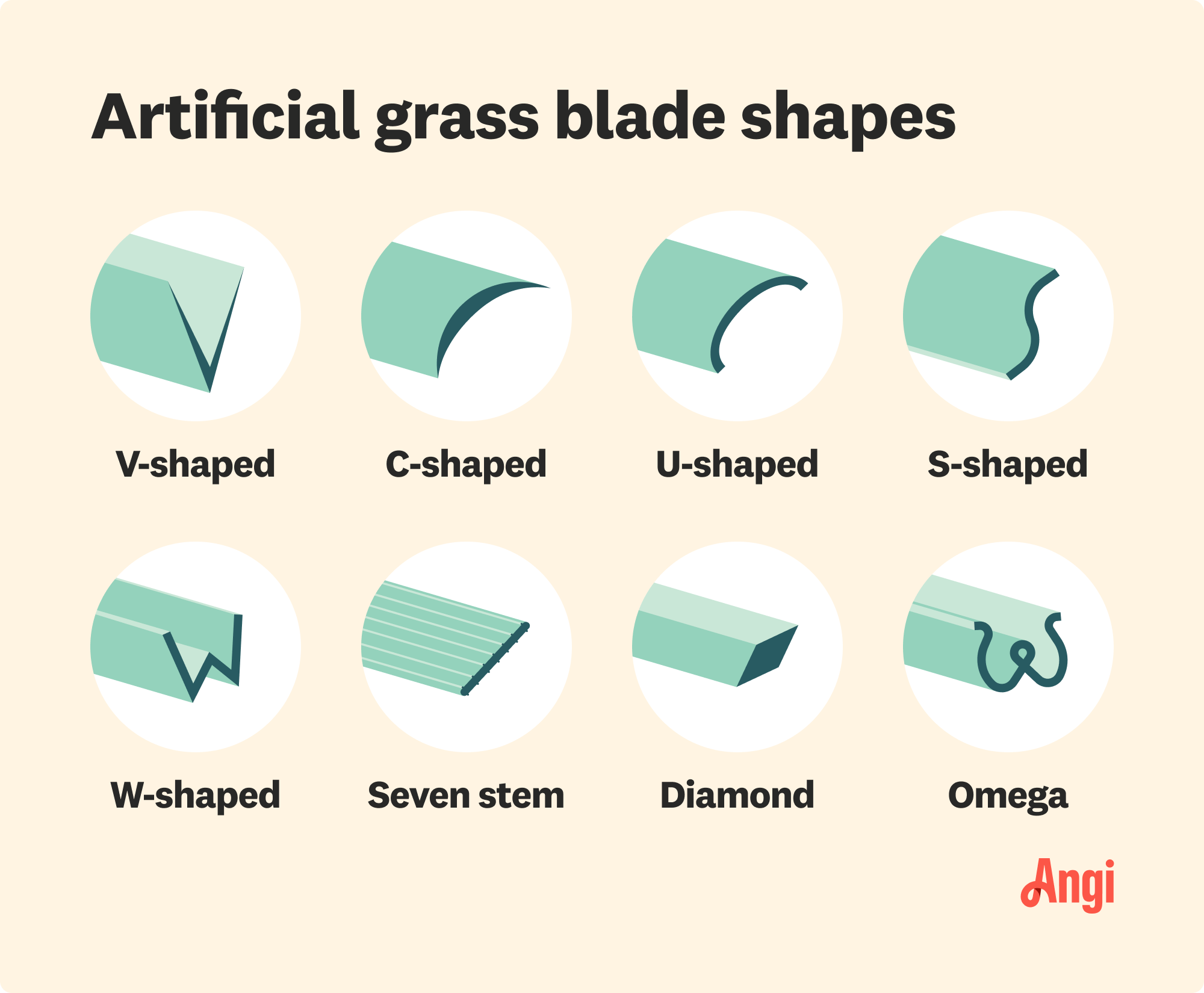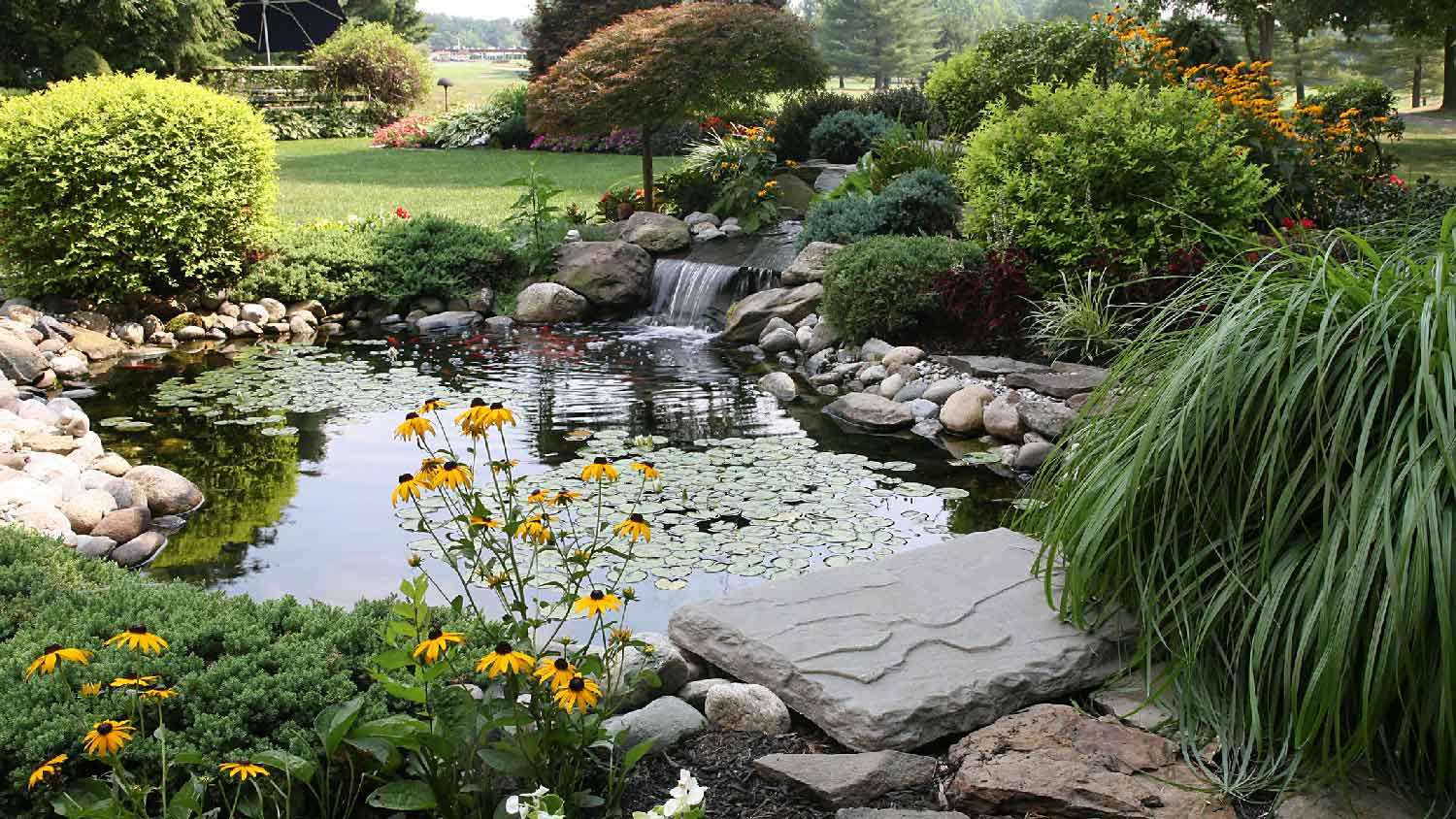
Ivy might look pretty, but you probably don’t want it in your garden. Learn how much it’ll cost to remove ivy by type, treatment method, and more.
A green project that's as simple as roll and stick (mostly)


Installing artificial grass on concrete is a low-maintenance way to add some green to your outdoor space, as well as a simple way to make potty breaks for your pet easier. There are a number of pros and cons of artificial grass, but for smaller concrete spaces, it can be a great-looking, easy addition to your property. With just a little preparation, you can easily learn how to install artificial grass on concrete and make dull outdoor spaces look lush and green for years to come.


Before getting started, you’ll need to assess whether your concrete is in suitable condition to have artificial grass installed. For a good bond between turf and concrete, the surface should be free of cracks, holes, uneven edges, stains, or debris. If necessary, use concrete filler or patches to smooth out the surface before installing artificial grass.
Artificial turf is great for small-ish concrete sections near your home that are flat. Assess drainage before installing artificial turf just anywhere. The main reason you shouldn't adhere fake grass to uneven surfaces? It can cause water to pool and eventually make your turf look lumpy or cause it to peel away over time.
You can test the area for pooling by hosing it down. If any water remains, there’s a drainage issue, and you’ll need to drill drainage holes to fix the issue. They should be 16mm in diameter at low points and filled with 10mm shingle to facilitate water flow. Afterward, lay a permeable shock pad or drainage mat under the artificial turf to enhance drainage. The concrete should also have a slight slope to direct water toward drainage points.
When securing astroturf, use water-permeable adhesives and seam tape to maintain drainage efficiency. Regular maintenance will help keep your drainage channels clear and functional.

First, sweep obvious debris off your concrete. Once it is clear of obstacles, apply a concrete cleaning solution. Use a mop and allow it to thoroughly dry before unfolding turf onto it. If you're in a hurry, try using a leaf blower or fan to speed up the drying process.

Next, unroll or unfold your turf and lay it out over the surface you’re covering. If you're installing over an L-shaped space or area where you need to connect multiple rolls, line these sections up carefully for now. It's fine for them to overlap for the time being.

Use a utility knife to cut away any extra edges along the perimeter of your artificial grass area. You can use a flat edge like a piece of plywood or ruler to help ensure an even cut. It should fit snugly along the perimeter.
Carefully line your gaps up, if there are any. Make sure the space is no bigger than about a quarter of an inch before you make final cuts where two separate rolls of turf meet. The smallest seams possible are key for two reasons. First, you don't want any obvious concrete gaps in your new green space. Second, this ensures the adhesive you put down sticks to both ends and creates a nice seal between the two pieces.

Use a trowel to generously apply smooth lines of glue. The line of adhesive should be at least 12 inches starting from the gap, leaving half a foot of adhesive for each side of the artificial turf. Do this at all gaps and along the perimeter, and be sure to read directions carefully before starting. Some products need exposure for 10 to 15 minutes before you should seal the grass on top of it.
A hand-operated joint roller is one device you can use to smooth out the gaps and prevent lumps. They cost around $50 at home improvement stores, but sometimes, they aren't the easiest product to find. In the event you can't find a joint roller, take a long strip of plywood and step on it along all edges to smooth them out.
Adding a dusting of sand to your new artificial grass helps give it a natural weight. Sand also works as a natural drainage agent and weed preventer, helping to preserve your turf. You don't want to use too heavy a hand with sand, nor do you want to overload one area with sand. Use a grass seed spreader or gentle hand-cranked device to leave a nice, even line across the turf area. Using your broom, spread the sand into the turf until you can't see it anymore.
Grass alternatives like artificial turf are a cost-effective way to add some green to bleak concrete spaces. The cost of artificial turf ranges between $2 and $8 per square foot, making it an economical addition to your outdoor space. In addition, artificial grass maintenance is simple and low-effort, saving you time and energy keeping it in good condition.
Installing artificial turf on concrete DIY isn't the most difficult task in the world. But if you're not fond of making cuts with a utility knife or worry about ineffectual seals at your gaps or perimeter, it might be worth hiring a professional.
An artificial grass installer near you can give you an accurate quote and help you decide what will fit best in your space. If you’re looking for a more involved project, like a putting green, a pro will be well-equipped to ensure it’s installed correctly. The cost of a backyard putting green installed by professionals averages around $4,300 for a 200-square-foot green.
From average costs to expert advice, get all the answers you need to get your job done.

Ivy might look pretty, but you probably don’t want it in your garden. Learn how much it’ll cost to remove ivy by type, treatment method, and more.
.jpg?impolicy=leadImage)
Landscaping your yard adds curb appeal and expands your home’s living space into the outdoors. Learn how much landscaping costs for various projects.

Looking to step up your golf game without leaving your property? This guide details backyard putting green costs to help you decide if this project is worth it.

If you have a hilly property, erosion can threaten your drinking water, soil, and plants. Fortunately, these tips can teach you how to stop erosion on a slope.

How big is your pond? Knowing how much water your pond can hold will help you choose the right treatments for it and the proper number of aquatic life.

Whether you’re updating your yard or moving into a new home, these tips will help you make sure your landscaping tactics around your house prevent water.